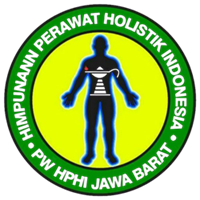Therapeutic Communication Strategy in Social Isolation Patient: A Case Study of Mental Health Nursing
DOI:
https://doi.org/10.56359/gj.v3i2.114Keywords:
communication, mental health, nursing care , social isolationAbstract
Objective: To provide nursing care for socially isolated patients with therapeutic communication strategies for socially withdrawn patients.
Methods: The method used is descriptive qualitative with a case study approach. The sampling technique is a therapeutic communication strategy. The sample taken was 1 patient who experienced social isolation disorders. The participants used in this study were the patient Mrs. S is 36 years old, a woman with social isolation mental disorders. The process of assessing and establishing a diagnosis is focused on the main problem. Objective and subjective data becomes a reference for periodic evaluation of nursing implementation. The location of the research was carried out at the BLUD of the Banjar City Hospital on 25-28 May 2022.
Results: Based on the results of nursing care found signs and symptoms, namely with subjective data feeling lonely, feeling useless, verbal responses are lacking and very brief, while objective data is the client looks a lot silent and doesn't want to talk, facial expressions are less radiant, less eye contact. The nursing problem found is social isolation. The intervention given is therapeutic communication.
Conclusion: Intervention of therapeutic communication strategies to help clients converse and want to get acquainted with their roommates in social isolation patients. This can happen if the patient can focus on doing therapeutic communication.
Downloads
References
Bitter, I. (2020). Definitions And Measurement Of Negative Symptoms In Schizophrenia. Managing Negative Symptoms Of Schizophrenia, 1–18.
Fiantis, D. (2018). Konsep Dasar Harga Diri Rendah. Angewandte Chemie International Edition, 6(11), 951–952., 2013, 5–24.
Gasril, P., Suryani, S., & Sasmita, H. (2020). Pengaruh Terapi Psikoreligious: Dzikir Dalam Mengontrol Halusinasi Pendengaran Pada Pasien Skizofrenia Yang Muslim Di Rumah Sakit Jiwa Tampan Provinsi Riau. Jurnal Ilmiah Universitas Batanghari Jambi, 20(3), 821–826.
Hamasaki, Y., Pionnié-Dax, N., Dorard, G., Tajan, N., & Hikida, T. (2021). Identifying Social Withdrawal (Hikikomori) Factors In Adolescents: Understanding The Hikikomori Spectrum. Child Psychiatry & Human Development, 52(5), 808–817.
Harvey, J. H., Wells, G. L., & Alvarez, M. D. (2018). Attribution In The Context Of Conflict And Separation In Close Relationships. In New Directions In Attribution Research (Pp. 235–260). Psychology Press.
Kandar, K., & Iswanti, D. I. (2019). Faktor Predisposisi Dan Prestipitasi Pasien Resiko Perilaku Kekerasan. Jurnal Ilmu Keperawatan Jiwa, 2(3), 149–156.
Kemenkes, K. (2019). Petunjuk Teknis Pelaksanaan Bulan Kapsul Vitamin A Terintegrasi Program Kecacingan Dan Crash Program Campak. STIKES PERINTIS.
Malfasari, E., Febtrina, R., Maulinda, D., & Amimi, R. (2020). Analisis Tanda Dan Gejala Resiko Perilaku Kekerasan Pada Pasien Skizofrenia. Jurnal Ilmu Keperawatan Jiwa, 3(1), 65–74.
Porcelli, S., Van Der Wee, N., Van Der Werff, S., Aghajani, M., Glennon, J. C., Van Heukelum, S., Mogavero, F., Lobo, A., Olivera, F. J., & Lobo, E. (2019). Social Brain, Social Dysfunction And Social Withdrawal. Neuroscience & Biobehavioral Reviews, 97, 10–33.
Rinawati, F., & Alimansur, M. (2016). Analisa Faktor-Faktor Penyebab Gangguan Jiwa Menggunakan Pendekatan Model Adaptasi Stres Stuart. Jurnal Ilmu Kesehatan, 5(1), 34–38.
Sandi, W. (2021). Faktor–Faktor Yang Berhubungan Dengan Kejadian Stres Pada Mahasiswa Tingkat Akhir Di Universitas Mitra Indonesia Tahun 2020. JIKMI (Jurnal Ilmu Kesehatan Masyarakat Indonesia), 2(2).
Somers, J. A., Curci, S. G., Winstone, L. K., & Luecken, L. J. (2021). Within‐Mother Variability In Vagal Functioning And Concurrent Socioemotional Dysregulation. Psychophysiology, 58(9), E13855.
Suerni, T., & Livana, P. H. (2019). Gambaran Faktor Predisposisi Pasien Isolasi Sosial. Jurnal Keperawatan, 11(1), 57–66.
Sumner, P. J., Bell, I. H., & Rossell, S. L. (2018). A Systematic Review Of The Structural Neuroimaging Correlates Of Thought Disorder. Neuroscience & Biobehavioral Reviews, 84, 299–315.
Wijayati, F., Nasir, T., Hadi, I., & Akhmad, A. (2020). Faktor-Faktor Yang Berhubungan Dengan Kejadian Harga Diri Rendah Pasien Gangguan Jiwa. Health Information: Jurnal Penelitian, 12(2), 224–235.
Downloads
Published
How to Cite
Issue
Section
License
Copyright (c) 2022 Genius Journal

This work is licensed under a Creative Commons Attribution 4.0 International License.















